You can fit everything by setting stretch=2 or somesuch, but it will extend the window limits symmetrically.
plot(md.ca, stretch=2)

Modifying the code of plot.corres() to allow for xlim/ylim adjustment is pretty straight forward. F.ex:
plot.corres <- function (x, main = "", addcol = TRUE, extreme = 0, rcex = 1,
rcol = 1, rlabels = "", stretch, ccex = 1, ccol = 2,
clabels = "", xlim, ylim, ...)
{
if (!is(x, "corres"))
stop("argument should be a correspondence object")
dat = x@data$origOut
xlimit = range(dat$rproj[, 1])
ylimit = range(dat$rproj[, 2])
if (!missing(xlim)) {
xlimit <- xlim
}
if (!missing(ylim)) {
ylimit <- ylim
}
if (!missing(stretch)) {
xlimit = xlimit * stretch
ylimit = ylimit * stretch
}
plot(dat$rproj[, 1], dat$rproj[, 2], type = "n", xlim = xlimit,
ylim = ylimit, xlab = paste("Factor 1 (", round(x@data$eigenrates[1]/10,
1), " %)", sep = ""), ylab = paste("Factor 2 (",
round(x@data$eigenrates[2]/10, 1), " %)", sep = ""), ...)
lines(c(max(dat$rproj[, 1]), min(dat$rproj[, 1])), c(0, 0))
lines(c(0, 0), c(max(dat$rpro[, 2]), min(dat$rproj[, 2])))
if (!(main == ""))
mtext(main, 3, 1)
if (length(rcol) == 1)
rcol = rep(1, nrow(dat$rproj))
if (length(rlabels) == 1)
rlabels = rownames(x@data$input)
text(dat$rproj[, 1], dat$rproj[, 2], rlabels, cex = rcex,
col = rcol)
if (addcol) {
if (length(clabels) == 1)
clabels = colnames(x@data$input)
if (extreme > 0) {
x = data.frame(dat$cproj[, 1:2])
extremes = apply(x, 2, quantile, c(extreme, 1 - extreme))
Accept = as.factor((x[, 2] < extremes[1, 2] | x[,
2] > extremes[2, 2]) | (x[, 1] < extremes[1,
1] | x[, 1] > extremes[2, 1]))
text(x[Accept == TRUE, 1], x[Accept == TRUE, 2],
clabels[Accept == TRUE], font = 2, cex = ccex,
col = ccol)
}
else {
text(dat$cproj[, 1], dat$cproj[, 2], clabels, font = 2,
cex = ccex, col = ccol)
}
}
}
plot(md.ca, xlim=c(-0.6, 1))

You could ask the author of the function if he could revise it.
His name and contact information is at ?corres.fnc


